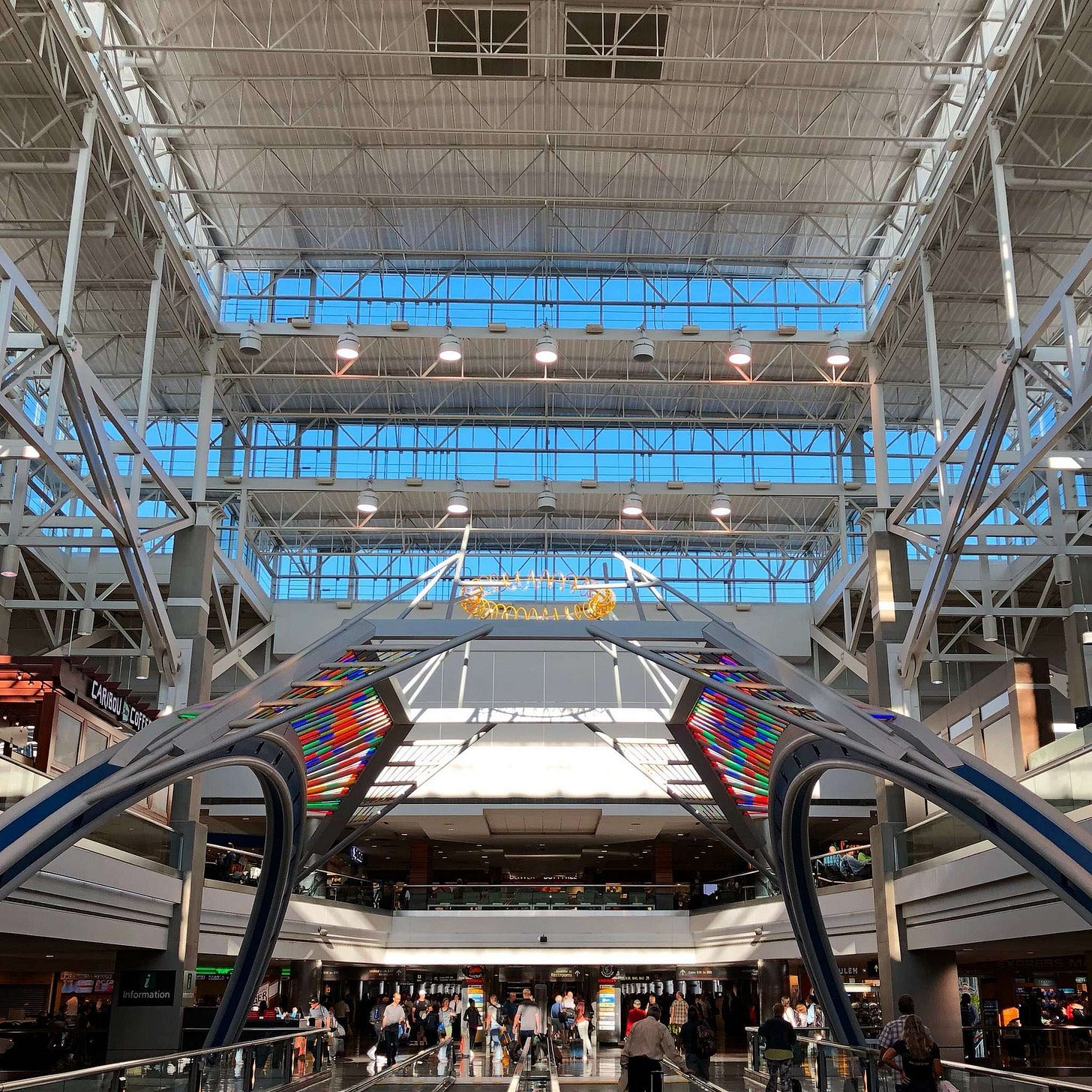Airport dining's local turn
Travelers can "experience a tiny bit" of a city through an airport's eateries
A recent trip took me to New York’s John F. Kennedy International Airport where JetBlue and its partners were unveiling a major food and beverage overhaul to Terminal 5.
In were Birch Coffee, Eataly, and Leon's Bagels among 40 planned new concessionaires and out was, well, many of the Gensler-designed terminal’s original food options that were hip when it opened to much acclaim in 2008.
“Even if [a concession is] in the greatest condition in the world, if it’s something you see for 10 years, it’s like ‘OK, what’s next,’” JetBlue President Marty St. George told me (read my full coverage on The Points Guy).
“I think the world has changed a little bit,” St. George continued. “People my age might not feel the same way but the future of JetBlue’s customer base [Gen Z] really appreciates that.”

JetBlue and partners, Fraport and the Port Authority of New York and New Jersey, splashed out on the announcement. The end of the concourse was blocked off behind a big “T5 Refresh” sign made of greenery and flowers where dignitaries and guests could gather and taste some of the new dining options (I can recommend Leon’s bagels).
They put on a big show for what, in the airport world, was a rather small undertaking: a $100 million refresh at an airport undergoing a $19 billion rebuild. That begged the question: just how important is food — especially local food — to the overall airport experience?
Local taste, global reach
Ask any contemporary airport designer and manager, and the answer is food is very important. They frequently emphasize the importance of rooting an airport in its location, something that involves both the architecture of the building but also the eateries and shops inside.
A steel and glass box filled with Starbucks and McDonald’s is going to feel like aero-anywhere whether you are in Berlin or Omaha.
“Bringing local restaurants to the airport provides variety and a sense of place and creates a dining option for passengers that is unique to that airport,” wrote the authors of the 2016 report Improving the Airport Customer Experience published by the U.S. Transportation Research Board’s (TRB) Airport Cooperative Research Program.
Then there are the elaborate affairs, like the one at Terminal 5, that airlines and airports put on over dining options. When was the last time, say, an airline celebrated new seating styles in departure areas? These events reinforce the importance of concessions to the overall airport experience.
“What we see really well received by the travelers is if [concessions] reflects something of the location,” Fraport USA CEO Sabine Trenk told me on the sidelines the JFK event. Fraport manages the concessions in Terminal 5, as well as at Baltimore-Washington, Cleveland Hopkins, Newark Liberty, and Washington Reagan National airports.
Not only are customers more pleased with local food and shopping options, she added, they are also more willing to spend more Fraport’s data shows.
And we know airports are all for any way they can boost non-aeronautical revenues, or any revenue from activities unrelated to planes taking off or landing. Just look at Dubai’s shopping mall with gates to understand.
Keep reading with a 7-day free trial
Subscribe to Airport Architecture to keep reading this post and get 7 days of free access to the full post archives.




